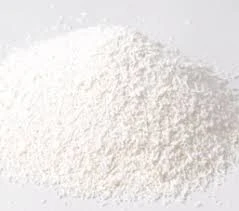
Understanding the Role of Antifoaming Agents in Food Industry Applications
Understanding Anti-Foaming Agents in Food Processing
In the world of food production, maintaining quality and consistency is paramount. One often overlooked aspect of this process is the use of anti-foaming agents. These additives play a crucial role in ensuring that the manufacturing of various food products remains efficient, safe, and appealing to consumers.
Foaming is a common issue encountered in various stages of food processing, particularly in the preparation of liquid products such as sauces, beverages, and dairy items. Foams can trap air and create unstable bubbles that cause inconsistency in the final product, leading to issues such as poor texture, undesirable volume, and difficulty in packaging. Anti-foaming agents help mitigate these problems by minimizing bubble formation and promoting the rapid collapse of any existing foam.
Understanding Anti-Foaming Agents in Food Processing
The mechanism of action for anti-foaming agents is relatively straightforward. When added to a foaming liquid, these agents reduce the surface tension at the air-liquid interface, thereby facilitating the coalescence of smaller bubbles into larger ones. Once these bubbles grow large enough, they rise to the surface and burst, effectively eliminating foam. This process is critical not just for aesthetic reasons but also for the overall functionality of the food product, ensuring a smoother texture and better shelf life.
anti foaming agent in food

Regulatory bodies worldwide, such as the U.S. Food and Drug Administration (FDA) and the European Food Safety Authority (EFSA), have established guidelines regarding the use of anti-foaming agents in food. These regulations require that any additives used must be safe for human consumption and should not alter the nutritional profile of the food product. Consequently, manufacturers must conduct thorough testing and provide evidence of safety before these agents can be approved for use in food applications.
Concerns often arise regarding the impact of food additives, including anti-foaming agents, on health and nutrition. However, when used appropriately and in compliance with regulatory standards, these agents are considered safe. Some manufacturers even opt for natural anti-foaming agents, like those derived from plants, to appeal to health-conscious consumers who prefer products with minimal synthetic ingredients.
The food industry has seen a growing trend toward transparency and cleaner labels, which has also influenced the usage of anti-foaming agents. As consumers become more educated about food additives, there is increased demand for food products that contain naturally derived ingredients. This shift encourages manufacturers to explore alternative methods of controlling foam or to develop cleaner, more natural anti-foaming agents that align with consumer preferences.
In addition to preserving product quality, effective foam control can also enhance productivity in food manufacturing. Excessive foaming can lead to equipment malfunctions and increased downtime, impacting overall efficiency. By implementing effective anti-foaming strategies, manufacturers can optimize their production processes, reduce waste, and ultimately deliver better products to the market.
In conclusion, anti-foaming agents are essential components in the food processing industry, ensuring that products maintain their desired texture, appearance, and quality. With ongoing research and innovation, manufacturers continue to refine their approaches to foam control, balancing the needs for safety, quality, and consumer acceptance. As the landscape of food production evolves, the role of anti-foaming agents will undoubtedly remain significant, contributing to the creation of high-quality food products in a competitive market.
-
Sodium Dichloroisocyanurate Safety Handling ProtocolsNewsJul.29,2025
-
Mining Chemicals for Copper Extraction Processes GuideNewsJul.29,2025
-
Fertilizer for Sale Shipping and Storage TipsNewsJul.29,2025
-
Dimethyl Disulfide as Sulfurizing AgentNewsJul.29,2025
-
Benzotriazole Safety Data Handling and Storage GuidelinesNewsJul.29,2025
-
Ammonium Bicarbonate Safety Handling Storage GuidelinesNewsJul.29,2025
-
The Transformative Role Of Trichloroisocyanuric Acid in Water TreatmentNewsJul.23,2025
Hebei Tenger Chemical Technology Co., Ltd. focuses on the chemical industry and is committed to the export service of chemical raw materials.
-

view more DiethanolisopropanolamineIn the ever-growing field of chemical solutions, diethanolisopropanolamine (DEIPA) stands out as a versatile and important compound. Due to its unique chemical structure and properties, DEIPA is of interest to various industries including construction, personal care, and agriculture. -

view more TriisopropanolamineTriisopropanolamine (TIPA) alkanol amine substance, is a kind of alcohol amine compound with amino and alcohol hydroxyl, and because of its molecules contains both amino and hydroxyl. -

view more Tetramethyl Thiuram DisulfideTetramethyl thiuram disulfide, also known as TMTD, is a white to light-yellow powder with a distinct sulfur-like odor. It is soluble in organic solvents such as benzene, acetone, and ethyl acetate, making it highly versatile for use in different formulations. TMTD is known for its excellent vulcanization acceleration properties, which makes it a key ingredient in the production of rubber products. Additionally, it acts as an effective fungicide and bactericide, making it valuable in agricultural applications. Its high purity and stability ensure consistent performance, making it a preferred choice for manufacturers across various industries.











